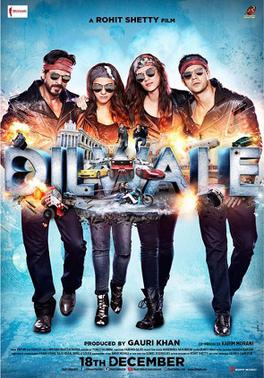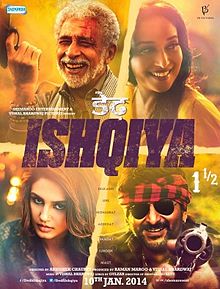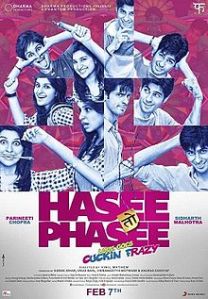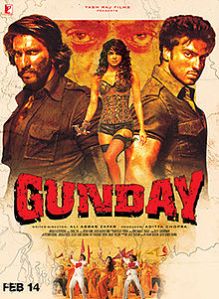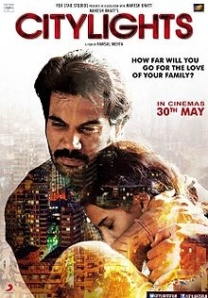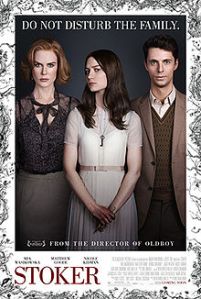Note: These reviews got deleted from ourvadodara.in, a site I no longer work for. So am posting the missing reviews here.
The Wolf of Wall Street

Rating: 100%
Martin Scorsese’s The Wolf of Wall Street plays out like staged storylines from WWE episodes back during its TV-14 era, albeit with an overdrive of over-the-top lewdness, crassness and rambunctiousness that may throw off audience members who go to the show expecting to root for ‘faces’ (i.e. the good guys) over heels (the bad guys). There is a growing misconception that the film glorifies its protagonist’s tales of debauchery and decadence instead of upbraiding it. It can’t be denied though that a temporary absorption of his rapacious, power-hungry attitude is felt, but our system soon filters it out when the film offers its healing therapy. It often breaks the fourth wall and works with the energy levels of a hyperkinetic farce to ingeniously establish an invisible barrier between us and the film. Unlike his last venture ‘Hugo’, Scorsese has no intentions to ‘transport us to the fictional world’; instead, we sit back, we howl with laughter and are given enough breathable space to think. Even in WWE, fan support for heels usually lasts only momentarily, after which we either switch support to a ‘face’ or anticipate the heel’s epic downfall.
The Wolf of Wall Street is a terrifyingly bold and far-reaching cautionary tale and a middle-finger gesture against the imbibition of greed and cold-hearted narcissism prevalent in many of the corporate cultures not only in capitalist economies but also in transitional economies nowadays. The grooming generally begins in business schools, with guest lectures and seminars on ‘How to Make it Big after B-School’, usually delivered in a highly charismatic rhetoric by “exciting entrepreneurs” or “inspirational management gurus”, whose job (exceptions exist, of course) is to make you feel pathetic for not making any money and then to groom you to continue feeling pathetic once you’ve earned some coz somebody in the world makes more money than you do (trust me – studying in one right now). Contentment is frowned upon as a sign of defeat, while covetousness (marketed as ‘passion’ or ‘drive’) is sought after – how shall the market forces function otherwise?
Stepping into the real world means acknowledging its harsh realities and cold truths and then not feeling guilty about it. At workplace you’re told to make it big but ‘not to the detriment of another’s livelihood’, but of course, the stipulation in quotation marks in only practicable in theory, right? Because in the end, its money that speaks, matters and decides the worth of an individual. So the warm and radiant faces beaming in job ads are neither warm nor customer-oriented – that’s nothing but a marketing gimmick meant for gullible customers. Scorsese takes pot-shots precisely at this ‘Get Rich or Die a Loser’ generation who possess a devil may care attitude towards ethical and moral considerations. The pay-off of ‘holding little to the imagination’ and filling it to the brim whether in sex, or profanity, or drugs or malice, is a mammothian-length master work that holds a carnival mirror to the world. Its cutting-edge contemporary in its storytelling, and as hard-hitting, impressive and relevant as Jason Reitman’s Up in The Air, David Fincher’s Social Network, Stanley Kubrick’s A Clockwork Orange or Orson Welles’ Citizen Kane. This belongs to the rare category of being ‘the film of the moment’, and it punches its message square into our faces.
The biggest irony in the film, as reports have already mentioned, is that Jordan Belfort is happily minting money now, in addition to his book sales (adapted to screen by Terence Winters) and work as a motivational speaker, with the million dollars he received for movie rights; Wikipedia states he’s not even fulfilled his restitution obligations after being indicted in 1997 for 22 months for security fraud and money laundering. The scumbag’s soul may be lacquered with all the drugs he’s taken in the past, and at least hundred rebirths would be needed before it gets an absolution. Maybe he doesn’t even want one, and is only doing his ‘motivation thing’ to stay out of the FBI’s radar. We never shall know; he has used his natural ability to lie through his pearly-white teeth to mulct others for years without drawing much suspicion. The closing scene is telling: now instead of his devious stock brokers, its hopeless sales agents who look up to modern Mammon with misty-eyed adulation.
You can practically check off every possible option on his charge-sheet of sins. He gets a preliminary pep-talk from an unconscionable grease-ball (a cameo appearance by Matthew McConaughey which is so awesome the trailers showcase him a hell more than the other supporting cast) after joining a blue chip company. The instructions are simple: do drugs, jerk-off and screw people better. There’s logic in here.
In Paul Thomas Anderson’s Boogie Nights, a fictional account of the rise and fall of Dirk Diggler, a pornographic actor during the late 80s and early 90s, it was drugs that charged him as well as led to his crash. Take any big name in the music industry (Beatles, Bob Marley, Courtney Love, Amy Winehouse, Lady Gaga) – old and new – drugs again. In scamming people, compunction eats up the soul unless it’s drug-coated.
After being laid off post stock market crash in 1987, he chances upon a penny stock boiler room that (falsely, of course) promises its customers 50% of their invested amount. He takes over the firm, renames it Stratton Oakmont to appeal to well-off investors, employs acquaintances and winnows them till they sound as glib as him, and then expands to employ over thousand stockbrokers who congregate under one roof to f### people up. There’s an adrenaline-driven hyper-masculinity glinting on each face, both male and female. This is one deadly community of mercenary scamsters who’re even more dangerous, absolutely remorseless (can’t fathom these guys having actual ‘life’ outside work) and less principled than the gangsters from Godfather series, Goodfellas or Departed. Their idea of fun and philanthropy is fulfilling a female employee’s wish of getting larger breast implants by challenging her to shave her head off (reminded me of a storyline from WWE involving CM Punk and his cultish clan), getting a pet chimpanzee to office, holding a midget-throwing contest (there’s an extended scene in which Belfort discusses ‘dos and don’ts with midgets’ which is simply fantastic and probably half-improvised), hand-standing during work, bullying employees who are ‘neat’, bringing in prostitutes who are categorized into ‘blue chips’, ‘NASDAQs’ and ‘pink sheets’, popping drugs like M&Ms (of course) and other such things – this is during working hours. Outside work, at lavish parties organized by Belfort, they’re even wilder, and wasted with Quaaludes (the film informs about the drug’s history).
Belfort’s wife Teresa is initially supportive of him – he finds her unadventurous and screws around with a gorgeous blonde of Irish-British-Italian-Dutch origin named Naomi Lapaglia. When caught red-handed, he doesn’t even try stopping Teresa like most conventional heroes would; three days later, Naomi shifts to his home, and eighteen months after that, she sheds off her elegance and turns all screechy and ghetto soon after marriage. Belfort also brings in ‘angry dad’ Max and mom Leah to handle his finances. The FBI, led by Patrick Denham, begins to sniff around his files to find for incriminatory loopholes, and just after interval, there’s a scene between Belfort and Denham that takes a page from Tarantino’s book in the way it lets tension bubble underneath the conversation. Real feelings peak in towards the end, when the situation involves Belford and Naomi’s child, but there’s very fleeting. There’s too much corrosion already for feelings to last beyond a few minutes.
Leading this suit-and-tie gangland is Leonardo Di Caprio, who’s performed a number of unhinged or tormented characters in his career and nailed each and every f**king one of them, whether it’s What’s Eating Gilbert The Grape, The Aviator, The Departed, Shutter Island, Inception, J Edgar or Django Unchained or Great Gatsby. He isn’t just consistent but also conscious about the films he picks. Here, he’s wickedly entertaining with an enviable screen presence that’s just addictive to watch. His Oscar moments come in two scenes – a) a laugh-out-loud scene featuring Quaaludes and a long drive back home and b) his violent confrontation with Naomi. Belfort’s compatriot and ‘married to cousin’ dirt-bag Donnie Azoff is played by Jonah Hill who holds his own in front of an actor of Caprio’s caliber, and steals a scene involving him, Brad Bodnick (played by Shane Bernthal) and a briefcase stashed with cash. The supporting cast marinates the animalistic intensity of the film in forming the foundation of a pyramid of cards that’s destined to tumble.
Looking at the current political scenario, it seems people need a leader who can restore their faith in the financial market and roll some money into their bank accounts. It wouldn’t be a stretch to see someone like Belford arise popularity in this clout. If Belfort decides to contest in the upcoming elections, maybe he shall become President. We’ve already seen the Republicans pushing in Sara Palin in the past, haven’t we? At least one knows his shit.
The Lego Movie

Rating: 100%
As a kid, I owned a Lego set. Of course, in India, there wasn’t much variety to play with in those days. I missed all those franchise themed toys it came up with over the years and was stuck with a Mr. Nobody. And all I remembered building was a little house with the colorful Lego bricks of many colors. I hardly recollect talking to my toys the way I my ten-year old cousin does today. He’s got no Lego set, but he spends his hours guiding, cheering, goading and even praying for his Transformers, Spiderman, Batman and other action figures and his admirable Beyblade collection. The Lego Movie is so spectacularly inventive both in humor and action I bet even a kid who hasn’t touched Lego pieces nor talked to his toys would take no time falling in love with it. In case you’re a movie buff drawn to animation and adventure films, you’d find yourself recalling scenes from films such as Toy Story, Wall E, Rango, Kung Fu Panda and its sequel, Shrek 3, Alice in Wonderland, Wizard of Oz, Star Wars and many others (my mind went back to The Truman Show, Kill Bill Volume 1 and even to the 1927 Fritz Lang classic Metropolis) while watching The Lego Movie, but you never shall go “Oh wait, that’s lifted straight out of …” the way people went “Yeah, it’s Finding Nemo meets Madagascar meets Lion King” after sitting through the 2006 film The Wild. You might, on the other hand, say “Wow! This is on par with Disney’s Toy Story and perhaps better than most blockbuster animated films released by major studios in the past few years!”. Yes, The Lego Movie is that awesome.
It greets you with a sick sweet earworm called ‘Everything is awesome’ which has an entire city of ordinary Lego characters – construction workers, crane operators, traffic cops, business men, homemakers etc – celebrating their mundane daily routine as if it’s they’re leading the most exciting lives imaginable. The hook and chorus of this anthem is as catchy as Kylie Minogue’s All The Lovers (I could hear Minogue in the back of my head while the song was playing) and sets the tone for how we are to perceive this world. Obviously, this place is no wonderland; in fact, most fascist regimes begin with an introduction of how gullible and ignorant its citizens are, perfectly happy being subjugated by their dictator.
In this case, he is aptly named Lord Business, and his Machiavellian plans include instructing the entire city how to lead their lives, feeding them the same content day after day and restricting people from travelling to foreign lands (which reminds of tighter immigration laws being imposed by developed countries). And yeah, he also plans to turn the entire world static with his fearsome weapon: Kragle Super Glue. We get a preview of his machine’s powers when he uses it on a cop’s parents and later brings in a Nail Polish Remover, another deadly gadget in his arsenal, to smudge off the cop’s ‘good’ face. Unfortunately for this Dolores Umbridge of Lego Land, there’s an uprising underway as the powerful, creative, magical forces comprising of Marvel superheroes, Star Wars characters, pirates, Shakespeare and Michelangelo, Dumbledore, Millhouse etc join hands to dissolve his powers over the land. All they await is the arrival of the ‘Special’, as a wise old man named Vitruvius (an Obi-Wan Kenobi kinda figure) has prophesized that only he can bring peace. And as underdog movies go, here’s when our hero Emmet stumbles into the picture.
A wide-eyed, spirited construction worker whose brain hasn’t conceived anything except an idea of a bunk-bed cum couch (the film allows us a sneak preview into his empty head too) is or rather becomes the ‘Special’ one after accidently discovering the Piece of Resistance which can help foil Lord Business’ scheme. He is soon taken into questioning by top cops, and it’s funny when they switch between good cop and bad cop simply by swirling their heads. Our clueless hero is subjected to torture until a mysterious girl saves him at the nick of time. She goes by the name Wyldstyle, and she’s the same woman whose sight bewitched him at the construction site, which by the way led to him accidently finding the Piece of Resistance she spent years hunting for. This non-Disney, non-princess female character holds our interest with her distinctive characterization. Apart from sporting an unconventional ‘punk rebel chick’ look complete with a black costume and hair dyed in black streaks, Wyldstyle also shows sides to her character we hardly expect in most animated films. From Vitruvius (who goes underground by becoming the piano-player at a Western saloon, hence reminding me of sword-master Hattori Hanzo from Kill Bill), we learn she was an outcast even in her childhood, a girl who kept changing identities in searching for her true self. Her boyfriend is Batman (you heard me right!), and while she claims he’s the best man for her, she says it by rote the way Emmet recites ‘Everything is awesome’. The filmmakers subtly hint Batman’s lack of concern towards her and her over-eagerness to please. And while she hates the brainwashing propaganda of Everything is Awesome, she sings it perfectly when compelled to. Yes, the song’s super catchy indeed, and Wyldstyle is a memorable part of The Lego Movie. She does eventually reveal her true name to someone, and I suppose it wouldn’t be hard to guess who that person is.
What does come as a surprise is the live-action sequence during the climax. That’s the crowning moment of The Lego Movie. I won’t tell you what happens, but what I can assert is that anybody can identify with this profoundly moving sequence. It’s all the more remarkable that the touching sequence features not thespian Meryl Streep but SNL comedian Will Ferrell.
What else? Well your eyes surprisingly take no time adjusting to the deliberately pixilated-animation, and there are as many laugh-out-loud moments (although G and PG rated only) as there were in Martin Scorsese’s Wolf of Wall Street. While sex and language drove away some audiences from the latter film, there’s nothing that should keep you from buying tickets to one of the most magical movies of the year.
Carrie

Rating: 60%
Summary: Miles ahead of the textbook jump-scare junk in the name of horror. Pretty decent as a psychological horror film, with spectacular effects. As a character study, lacking.
Carrie can’t be included in the list of textbook jump-scare junk most audiences have taken a fondness to post James Wan’s sleeper hit The Conjuring. For about an hour and fifteen minutes, the film shares the horrors endured by its protagonist Carrie White, but they’re mostly psychological.
She is bullied and catcalled at school both by popular cliques as well as regular kids, her tormentors largely female. She has a sickly-looking Christian fanatic for a mother who subjugates and punishes her on a regular basis; the basket-case holds antiquated views aging back to Adam and Eve and ‘the first sin of love-making’, regarding her daughter the fruit of her sin.
In many ways, Carrie would remind us of Luna Lovegood, the outcast from Harry Potter series, or an X-men character except with the self-esteem levels of Nina from Black Swan or Raj Koothrappali (the Indian guy in The Big Bang Theory) in the company of the fairer sex, with a parent as cracked (though not as sadistic) as Gertrude Baniszewski, the caretaker of Sylvia Likens, a teenager tortured to death by her own children, and class-mates as vapid, uncaring and spiteful as well… 21st century teenagers just about anywhere in the world. She discovers she can move objects without touching, a superpower known as telekinesis. Unfortunately for her, Dumbledore does not exist in this world otherwise she’d be an Auror at Ministry of Magic by now.
While her powers trigger automatically, they remain within her control as she unleashes hell on Earth (Ewen High School to be specific) which curtains a more vengeful image over Brian De Palma’s Carrie; those who’ve watched the Oscar nominated 1976 adaptation of Stephen King’s horror tragedy will remember the previous Carrie as a pale-skinned nervous wreck with freakish powers beyond her control. Hence, this Carrie eagerly participates in decimating those who’ve done her wrong with a remorselessness equaling Voldemort, Harry Potter’s prime antagonist. But as she’s consciously performing this murderous ritual, she is merciful towards people who’ve been warm and supportive; she may strike us as a kiddo version of Beatrix or The Bride from The Kill Bill – a revengeful heroine.
In between these two forms – timid and aggressive – we are briefly introduced to a ‘normal’ Carrie, an introverted teenager yearning to be accepted by society. This girl has similar ambitions of any straight (the ambitions remain the same for gay except the ‘boy’ part) teenage girl of her age – to go to the prom attired in her favorite gown and dance with the boy she likes and if lucky, get voted as prom queen. She has inhibitions cultivated since childhood she has trouble getting over – she won’t dance to fast numbers and would hesitate stepping in even for the slow, romantic ones. Tommy, a kind-hearted popular classmate (think Finn Hudson from Glee) and her prom partner, is understanding, smooth and careful enough not to be pushy and rush things with her. He wants her evening to be memorable, but it’s just a one-night thing.
It’s a consolation, an act of atonement from Tommy’s girlfriend Sue, who feels ashamed of herself for participating in a particularly nasty incident of bullying involving Carrie; it’s a well-known scene among horror buffs in which the girls throw tampons at Carrie while she’s screaming in the shower room, naively thinking she’s bleeding to death when it’s actually her first menstrual period.
The prom scenes that form the coupling evoke an episode from Disney show, albeit ending with a heavy dose of F-words, pig blood and Final Destination-style violence. The cause is the ultimate prank played on poor Carrie by her spoilt tormentor Chris, who extracts revenge by dropping a bucket of blood of a pig killed by her and her boyfriend Billy. She was the one who riled up the other girls to pick on her, it was she who filmed the entire event in the shower room (set in the modern day, there are enough social networking sites to further the humiliation) and got suspended from school and banned for refusing to perform a detention ordered by gym teacher Miss Desjardin as well as uploading the embarrassing video onto the internet. When most other girls, including Sue, refrain from supporting her defiance, she, in a way, becomes an outcast. In this film, we’re introduced to her father as a rich schmuck who most likely gave little time to mend his daughter’s ways.
The film also makes Sue an outcast in the eyes of ‘pretty, hip girls’ for sacrificing prom to make Carrie happy, and introduces us to her mother in a single scene taking place at Carrie’s mother Margaret’s dressmaking store. Kimberley Pierce, the film’s director, hints at themes including role of parenting on a child’s psychology and clearly demarcates the personalities of Carrie, Sue and Chris and the paths taken by each to give us a moral lesson on empathy, forgiveness and sacrifice by granting a happy ending to one of the girls – can you guess who that is? Tragically, it isn’t the girl who most deserved her revenge.
This film isn’t a big leap for Pierce, who debuted as a director in 1999 with Boys Don’t Cry, a fascinating character study based on a true story of a girl who identifies herself as a man and gets raped and murdered by her male acquaintances once her secret is revealed.
These aren’t full-bodied characterizations, although they have the potential to be. Although Pierce’s message is pretty straightforward, as highlighted in the film’s closing scene, she leaves potential dimensions under-explored, such as Chris’ or even Sue’s motivations. This could’ve been a three-woman character study in a horror setup, and Pierce has the balls to do that. She winds up too soon, seeming more casual this time.
I found Carrie a lot more entertaining than the audience members around me, being a big fan of psychological horror films. People expecting jump scares wouldn’t get any. People expecting a gore-fest shall have to remain patient till the halfway mark. The special effects are spectacular, and there’s massive bloodshed to munch popcorn to once Carrie gets berserk. And more than Chloë Grace Moretz, who does a decent job portraying Carrie after delighting us playing the rosy, wide-eyed Isabelle in Martin Scorsese’s Hugo, this film’s worth catching for Julianne Moore, who dons a gaunt, batshit crazy look, mumbles Biblical verses with fanatical fervor and mesmerizes us.
